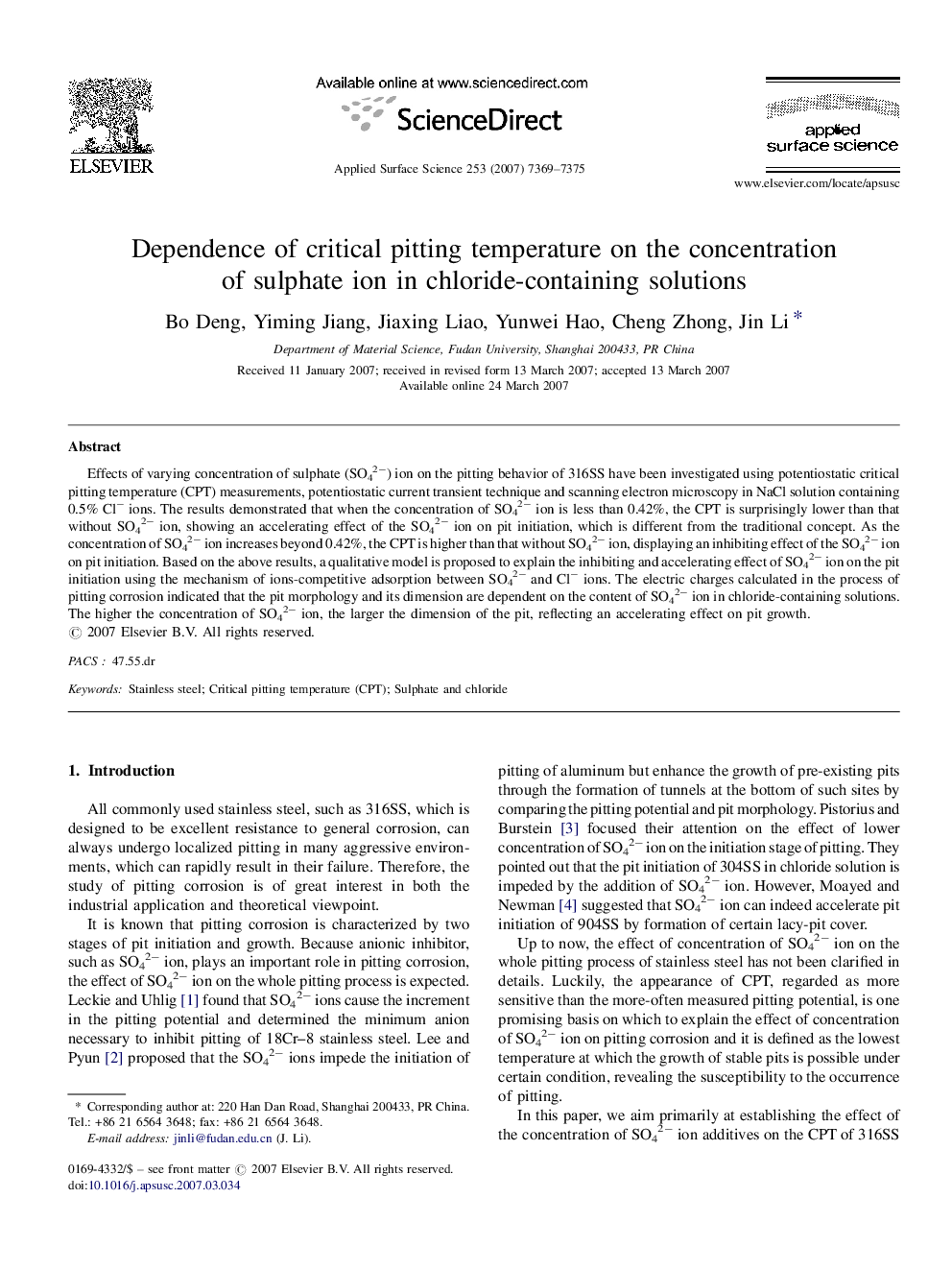| کد مقاله | کد نشریه | سال انتشار | مقاله انگلیسی | نسخه تمام متن |
|---|---|---|---|---|
| 5369651 | 1388447 | 2007 | 7 صفحه PDF | دانلود رایگان |

Effects of varying concentration of sulphate (SO42â) ion on the pitting behavior of 316SS have been investigated using potentiostatic critical pitting temperature (CPT) measurements, potentiostatic current transient technique and scanning electron microscopy in NaCl solution containing 0.5% Clâ ions. The results demonstrated that when the concentration of SO42â ion is less than 0.42%, the CPT is surprisingly lower than that without SO42â ion, showing an accelerating effect of the SO42â ion on pit initiation, which is different from the traditional concept. As the concentration of SO42â ion increases beyond 0.42%, the CPT is higher than that without SO42â ion, displaying an inhibiting effect of the SO42â ion on pit initiation. Based on the above results, a qualitative model is proposed to explain the inhibiting and accelerating effect of SO42â ion on the pit initiation using the mechanism of ions-competitive adsorption between SO42â and Clâ ions. The electric charges calculated in the process of pitting corrosion indicated that the pit morphology and its dimension are dependent on the content of SO42â ion in chloride-containing solutions. The higher the concentration of SO42â ion, the larger the dimension of the pit, reflecting an accelerating effect on pit growth.
Journal: Applied Surface Science - Volume 253, Issue 18, 15 July 2007, Pages 7369-7375